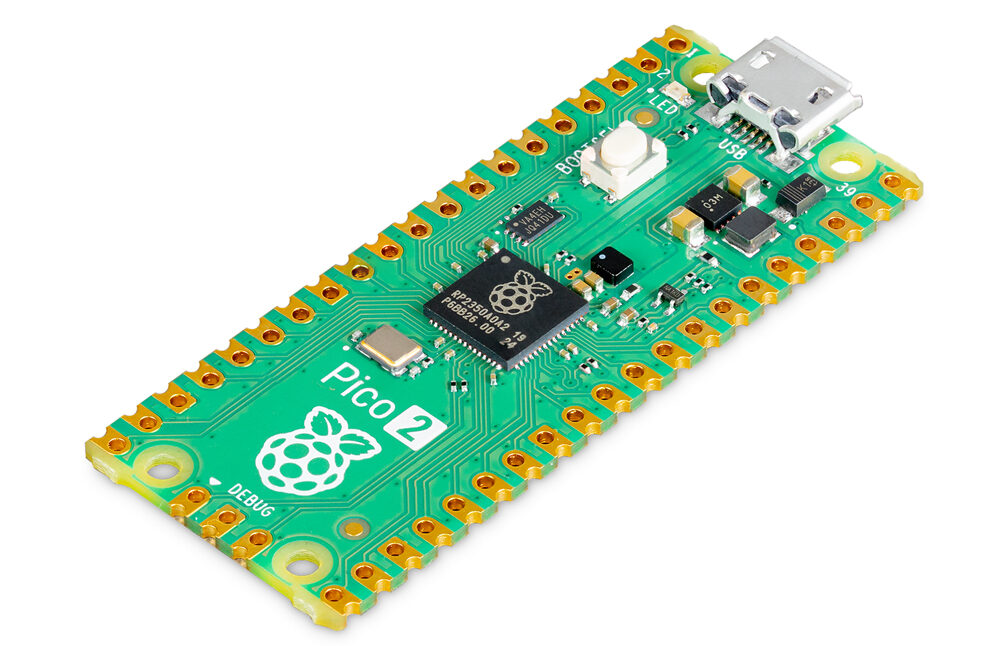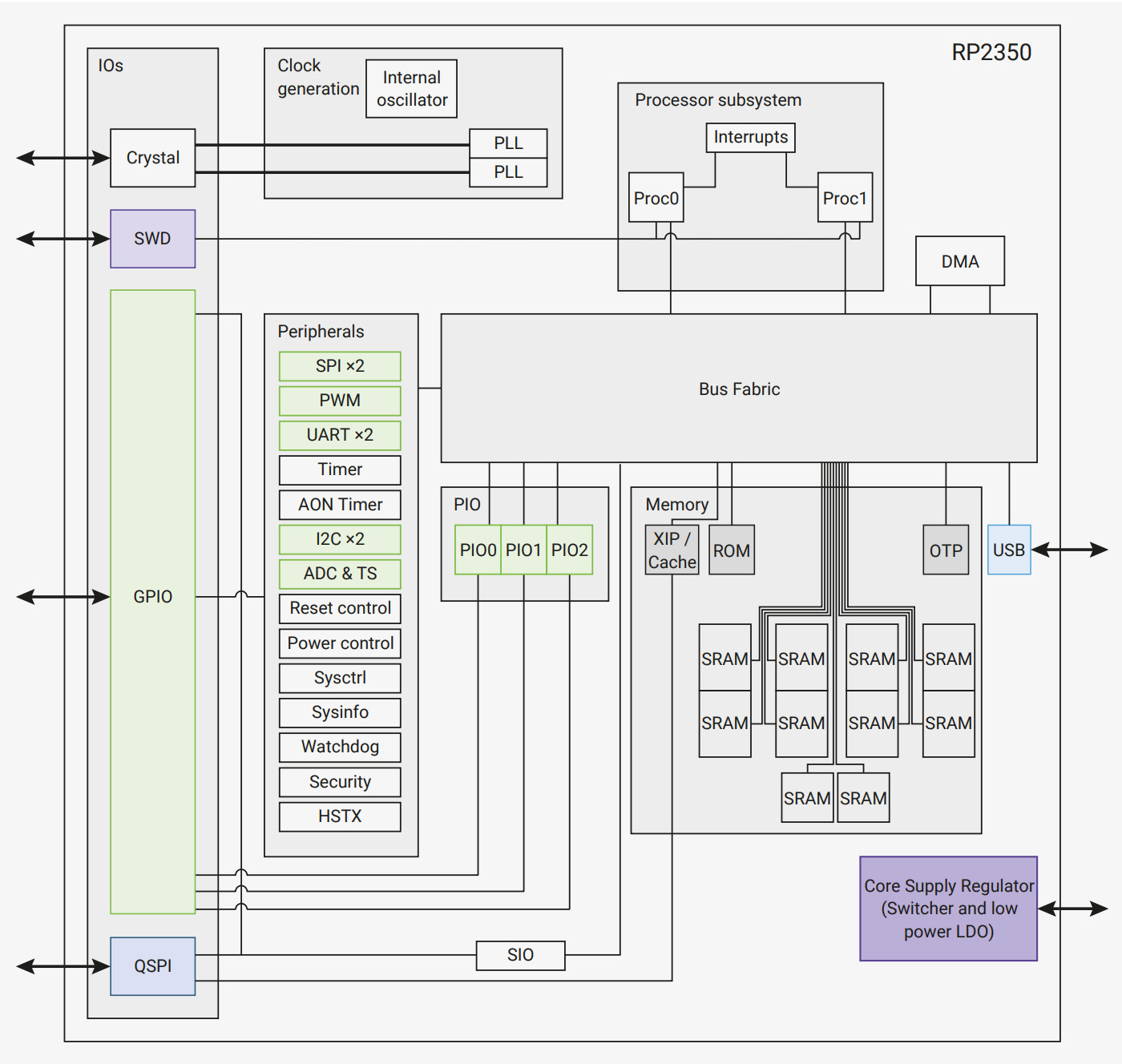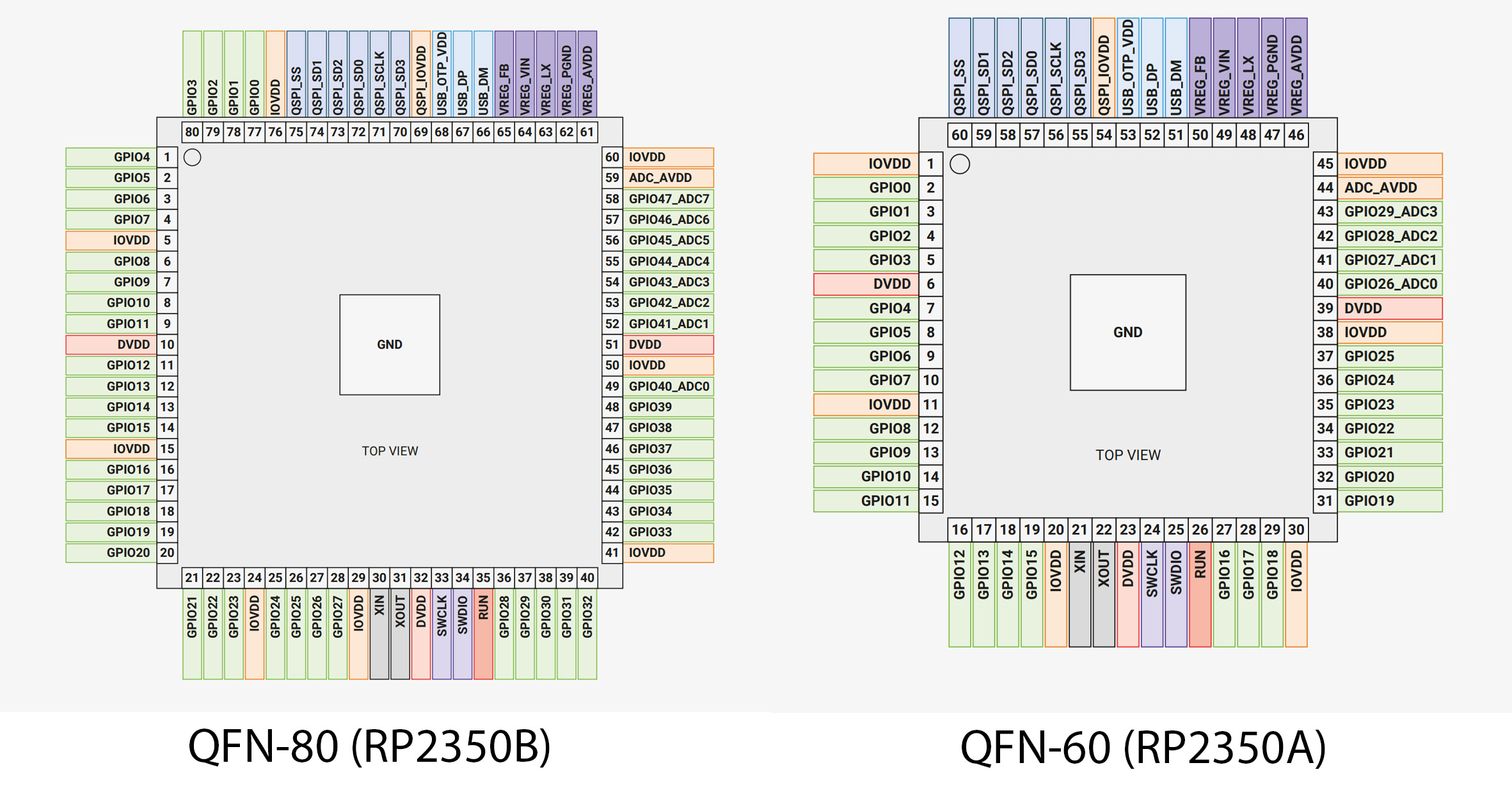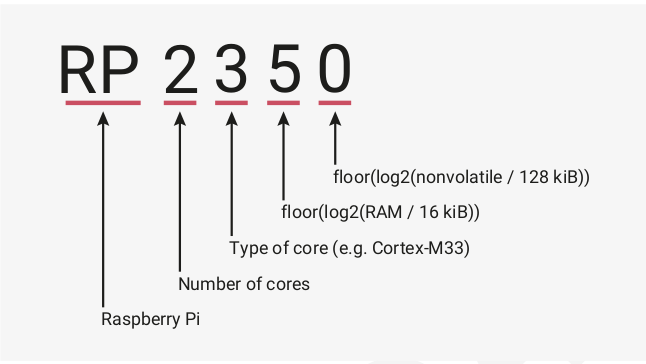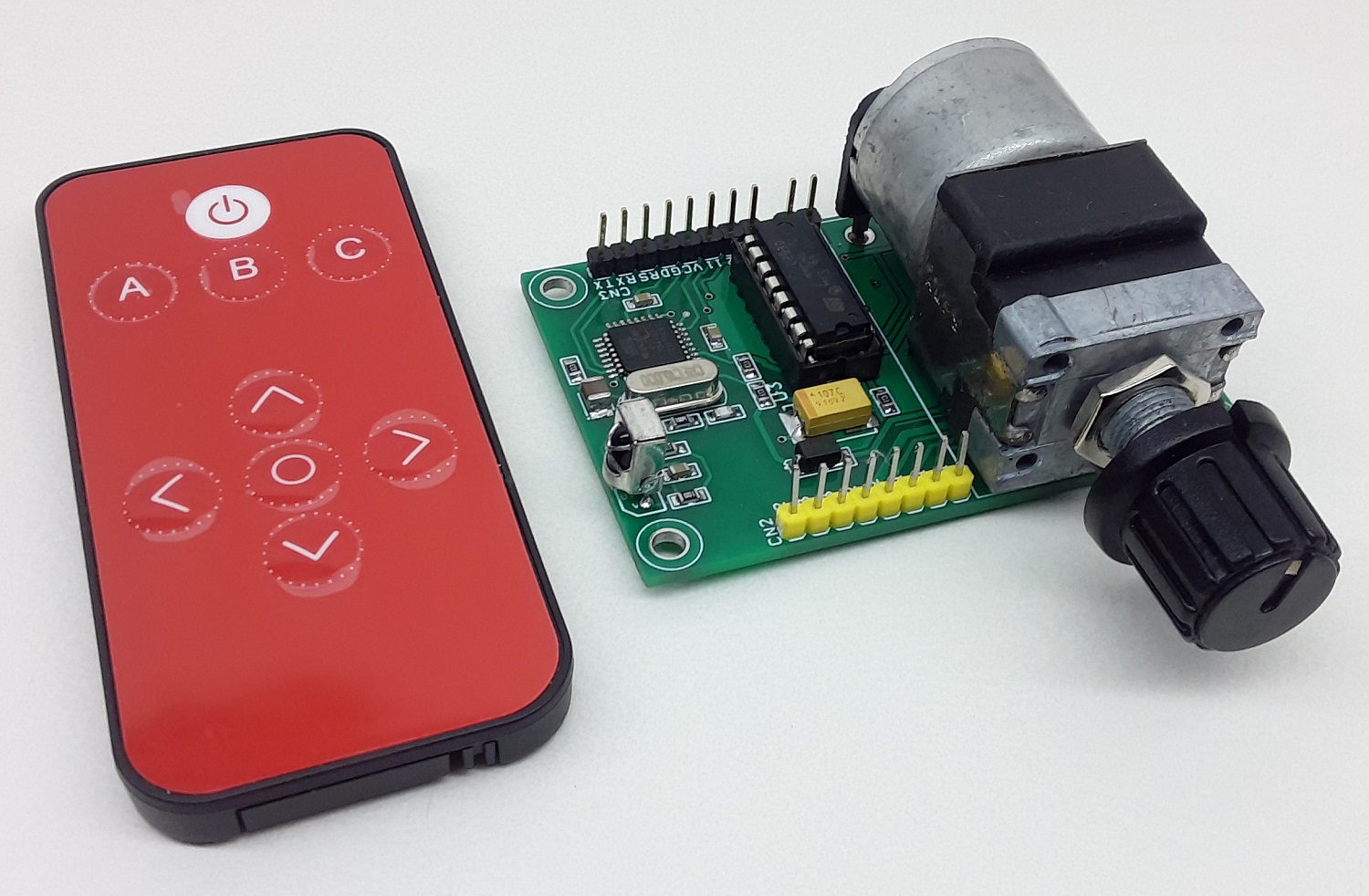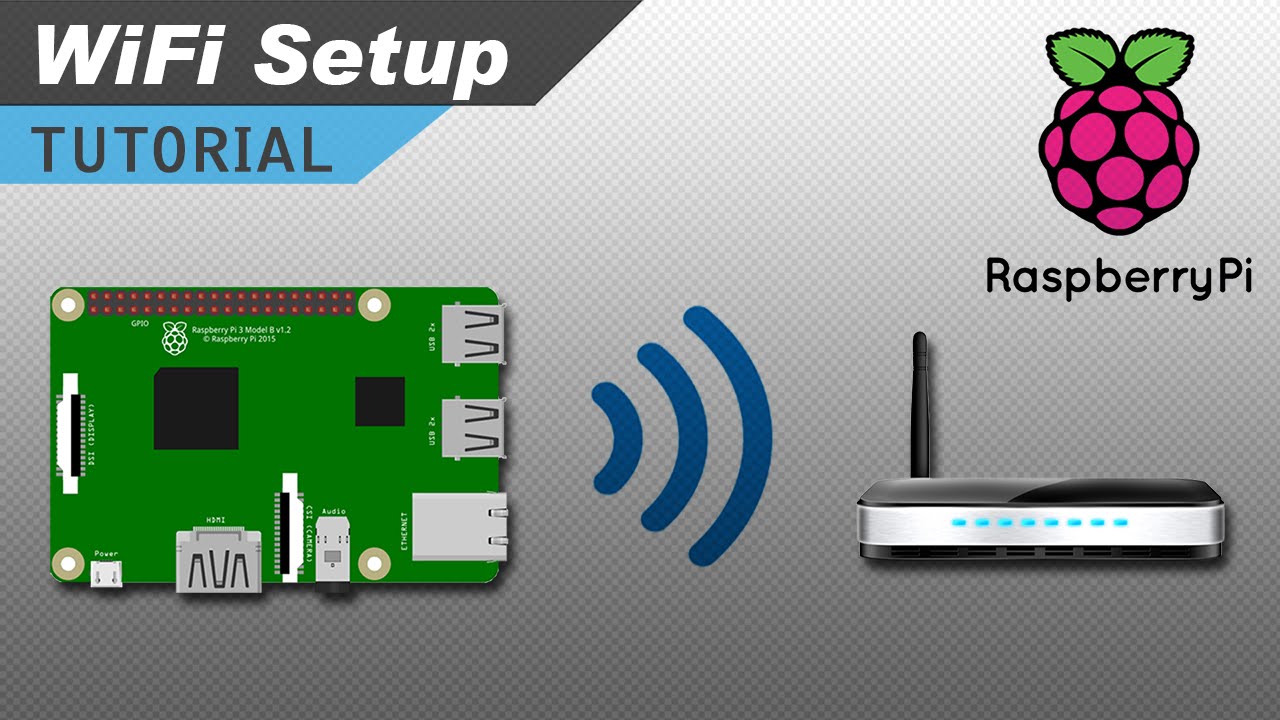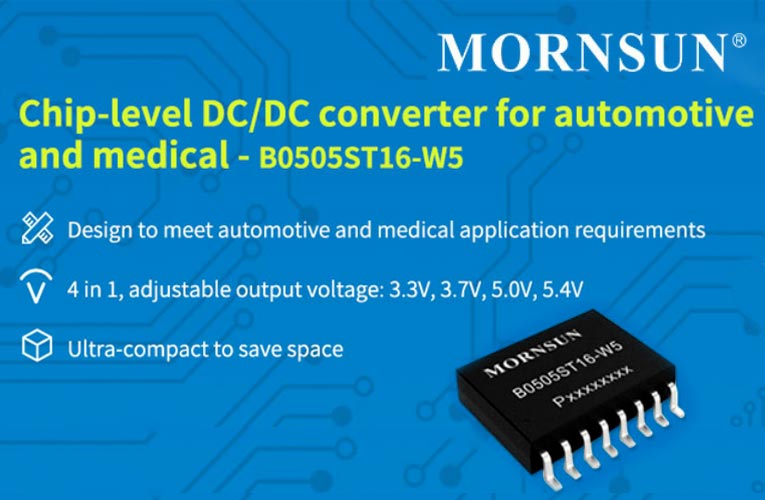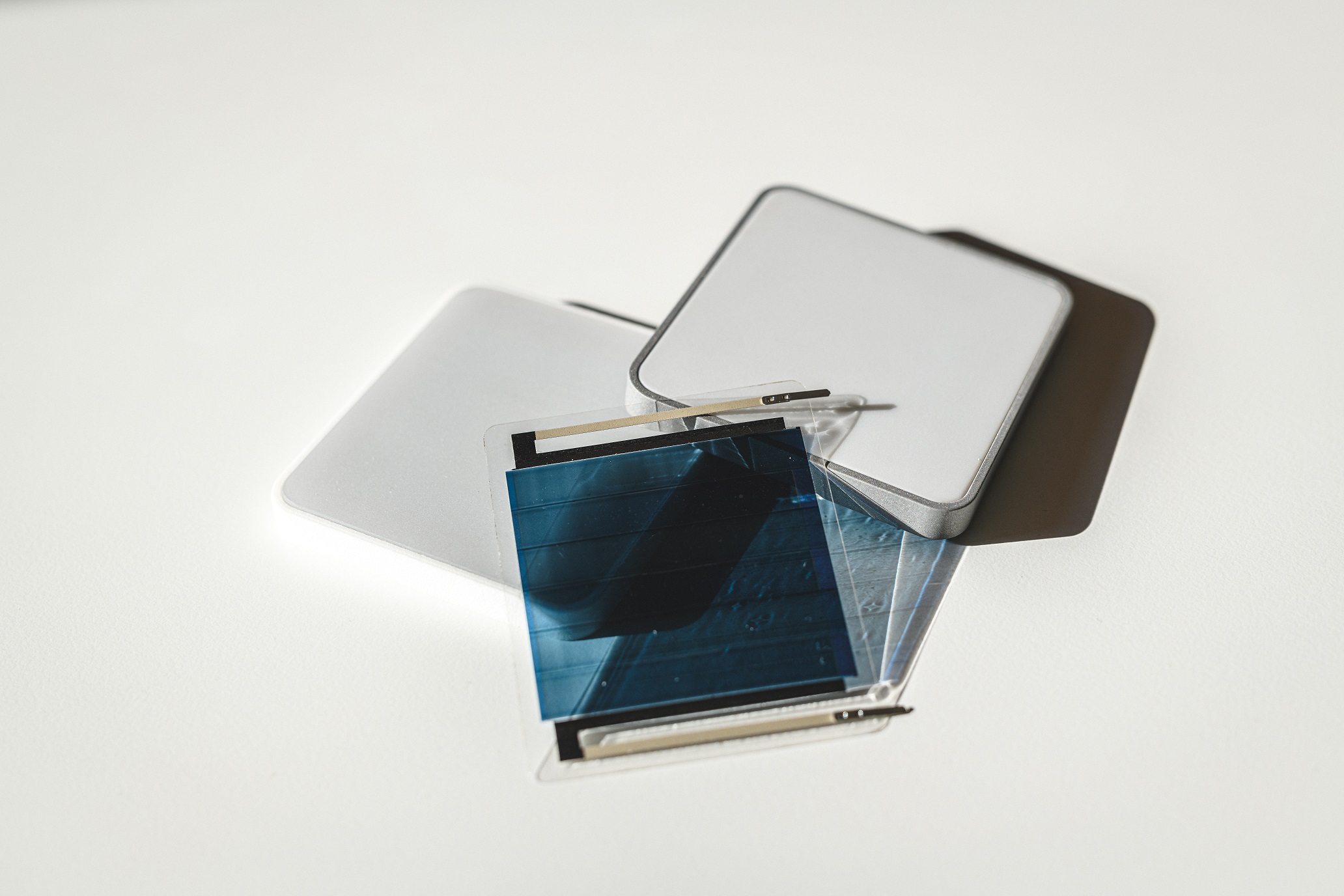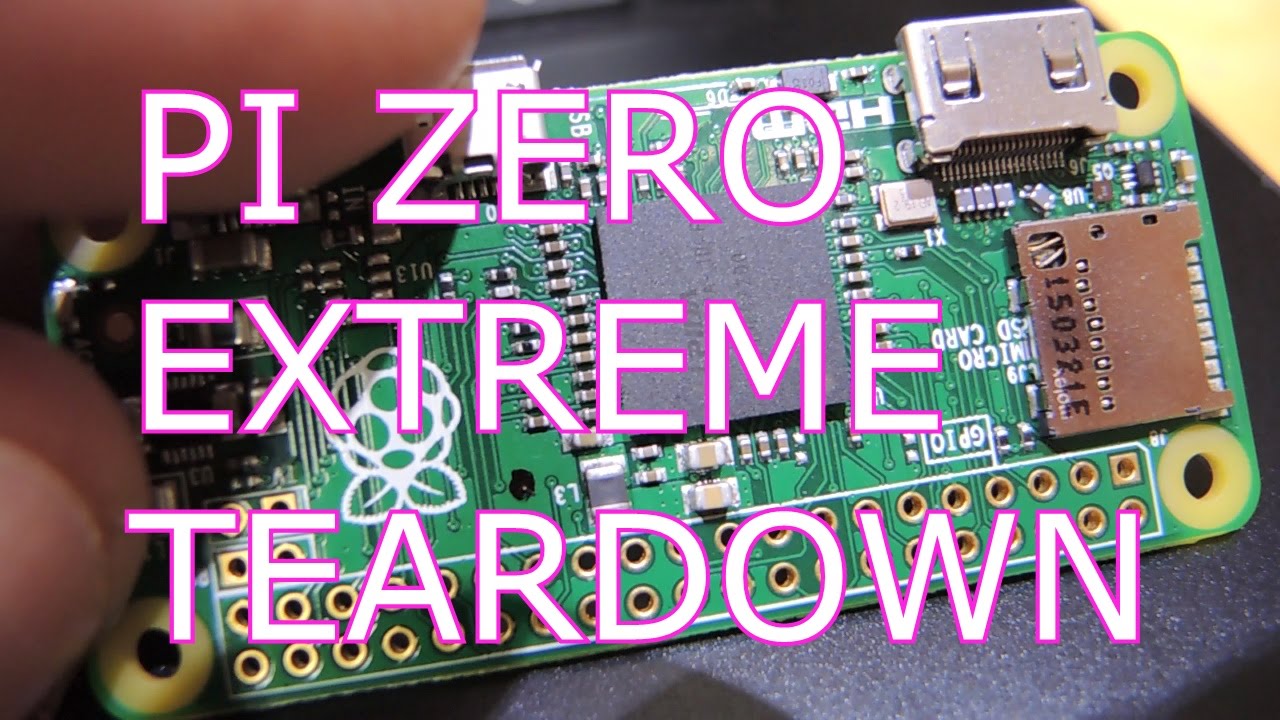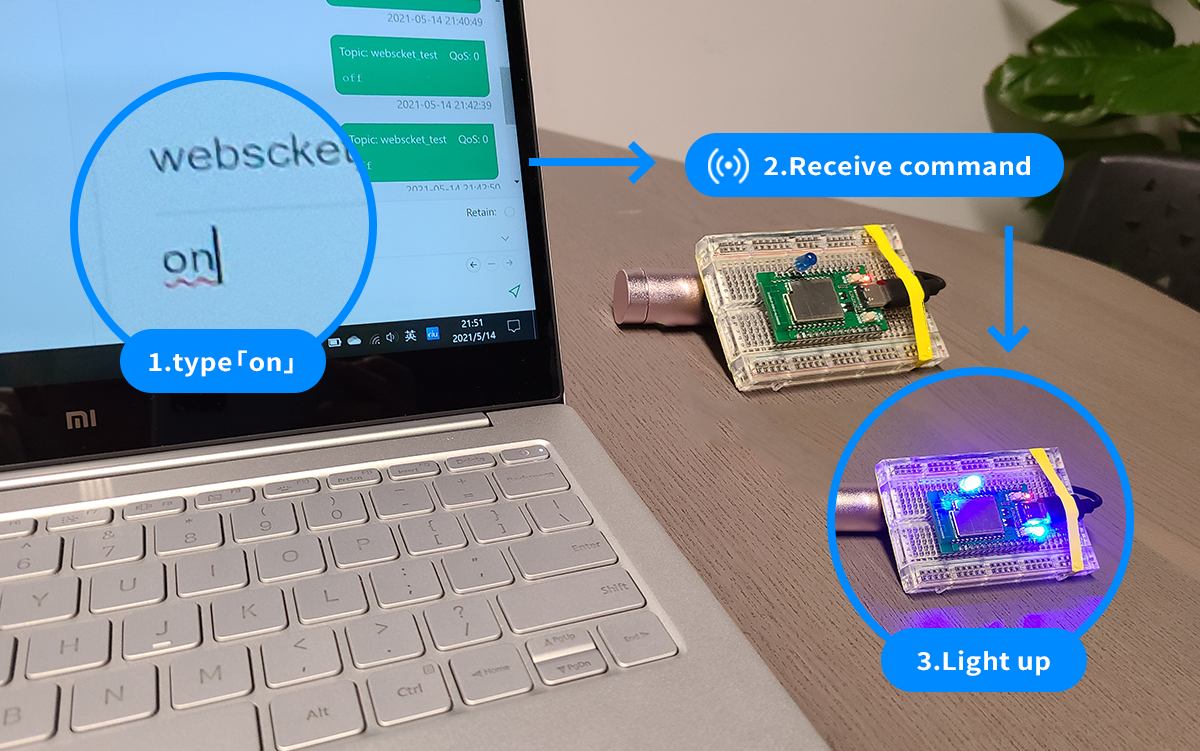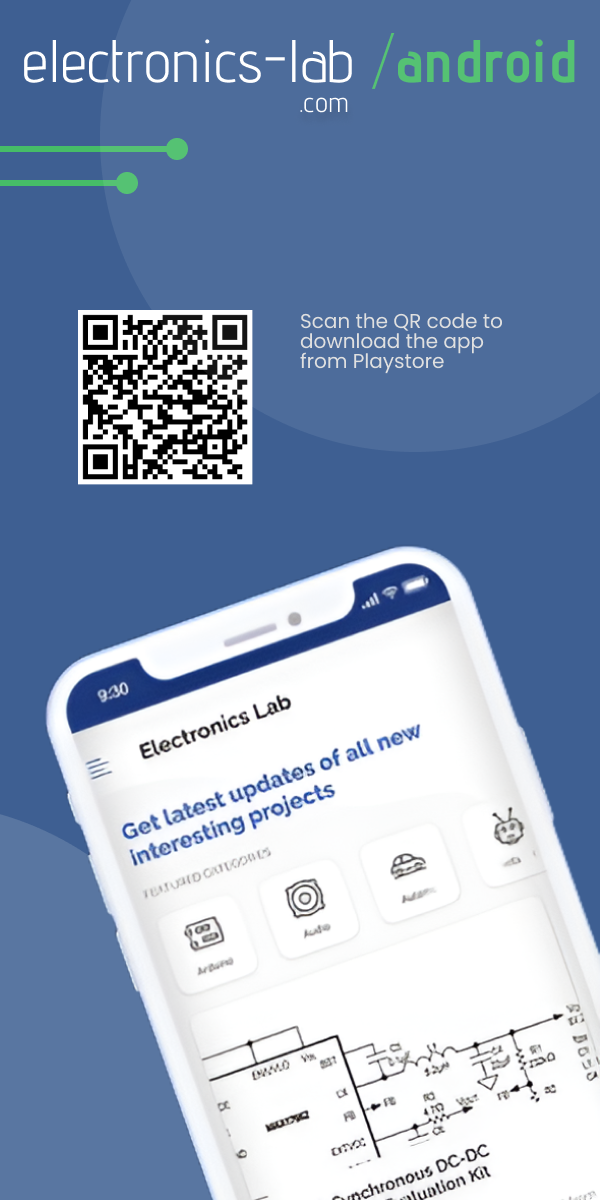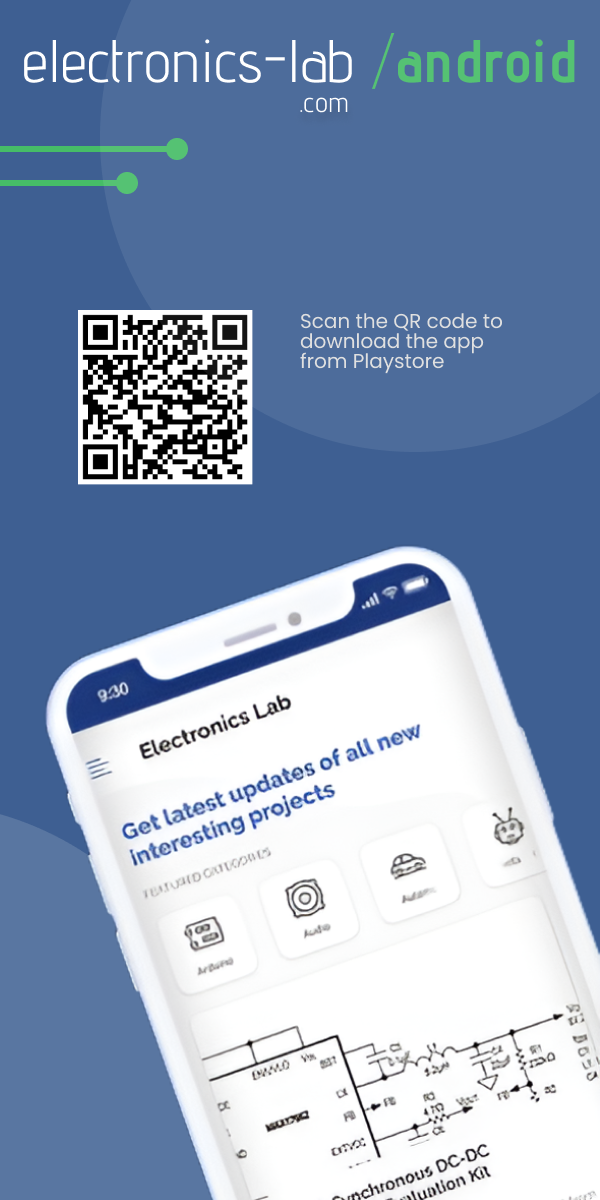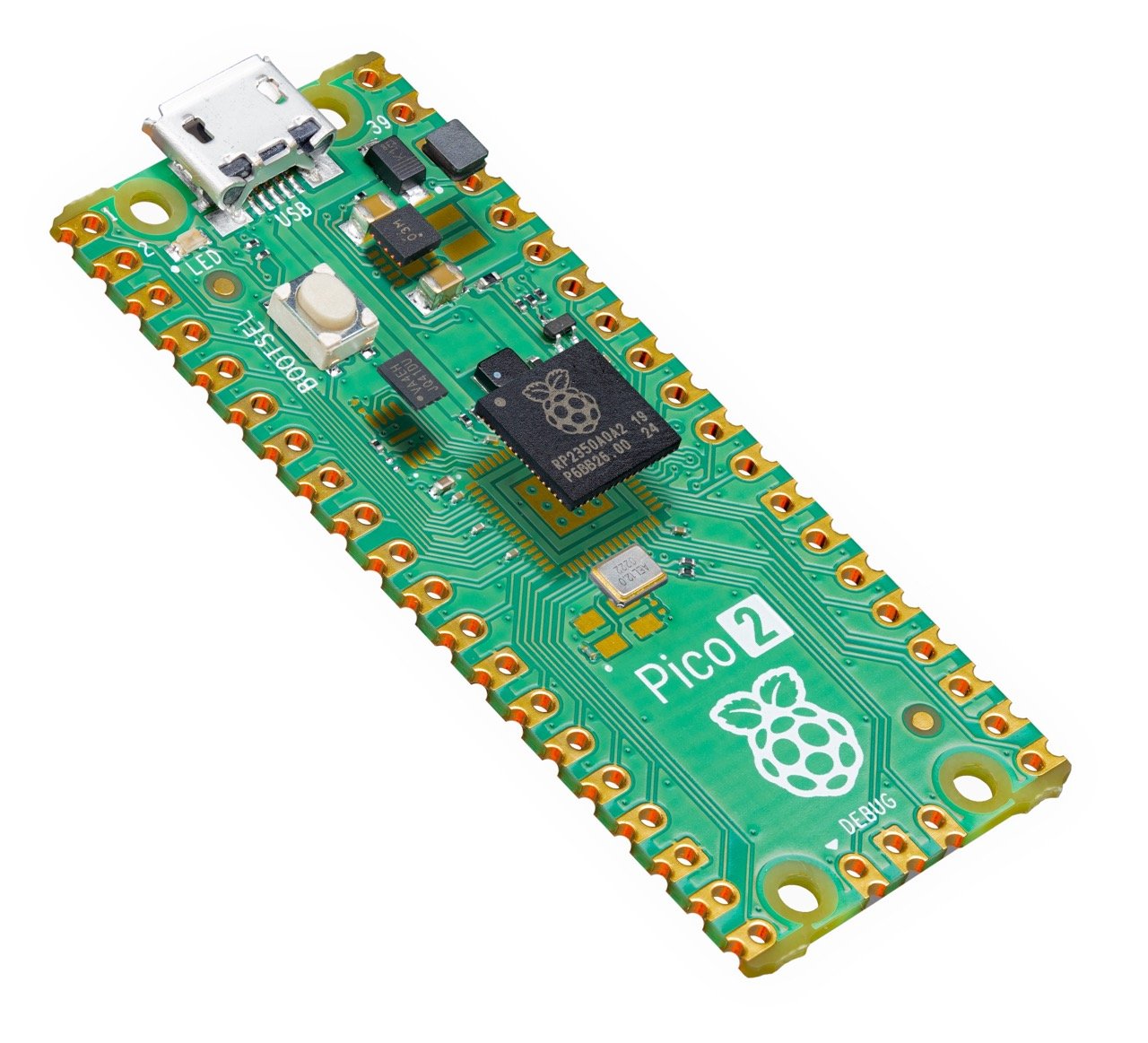
Raspberry Pi Pico 2 Launches with RP2350 Microcontroller and Costs Only $5
Raspberry Pi Foundation has just announced the launch of Raspberry Pi Pico 2, built around the RP2350 Microcontroller. The new board will feature dual Cortex-M33 or Hazard3 processors, increased SRAM and flash memory, and advanced security features like anti-fuse OTP for key storage, Secure boot, and Fast glitch detectors.
The company also mentions that more upcoming variants will be like the Pico 2 W with wireless functionality and models with pre-installed headers. The previous Raspberry Pi Pico RP2040 sold nearly four million units for various applications and with the upgraded specs and low cost of this new RP2350-based Pico 2 board the company expects to exceed that number.
Let me clear one thing, the new RP2350 will feature two sets of dual-core processors: the RISC-V and the Cortex-M33, but you can only use one set at a time. Other than that it’s very similar to the RP2040 but has faster cores, more memory, and an extra PIO block. The Cortex-M33 cores also have added security features.
The block diagram of the new RP2350 MCU gives us a good idea about the internal workings of the CPU, you can find the block diagram along with other information about this new controller on the Datasheet for the RP2350 MCU.
The company also provides a Pinout diagram of the RP2350 MCU along with the block diagram of the device, and as of my understanding the company offers two packages the RP2350A and the RP2350B the main difference between the two is that the B-package features additional GPIOs and analog inputs whereas the A-Package has the same number of GPIOs as of the RP2350A.
Raspberry Pi Pico 2 Specifications
- Processor:
- Dual Arm Cortex-M33 or dual Hazard3 RISC-V processors @ 150MHz
- Memory:
- 520 KB on-chip SRAM
- 4 MB on-board QSPI flash
- Compatibility:
- Software- and hardware-compatible with Raspberry Pi Pico 1
- Programming:
- Drag-and-drop programming using mass storage over USB
- Form Factor:
- The castellated module allows soldering directly to carrier boards
- Security Features:
- Optional boot signing, enforced by on-chip mask ROM
- Key fingerprint stored in OTP
- Protected OTP storage for optional boot decryption key
- Global bus filtering based on Arm or RISC-V security/privilege levels
- Peripherals, GPIOs, and DMA channels individually assignable to security domains
- Hardware mitigations for fault injection attacks
- Hardware SHA-256 accelerator
- Interfaces and Peripherals:
- 2 × UART
- 2 × SPI controllers
- 2 × I2C controllers
- 24 × PWM channels
- 4 x ADC channels
- 1 × USB 1.1 controller and PHY (host and device support)
- 12 × PIO state machine
- Other:
- Operating temperature: -20°C to +85°C
- Supported input voltage: 1.8–5.5V DC
The Raspberry Pi Pico 2 utilizes the same C/C++ and Python SDK as its predecessor, with additional features for security. A new toolchain is available for RISC-V development. For more information, refer to the documentation website and GitHub repositories for the Pico SDK new MicroPython and CircuitPython images along with examples.
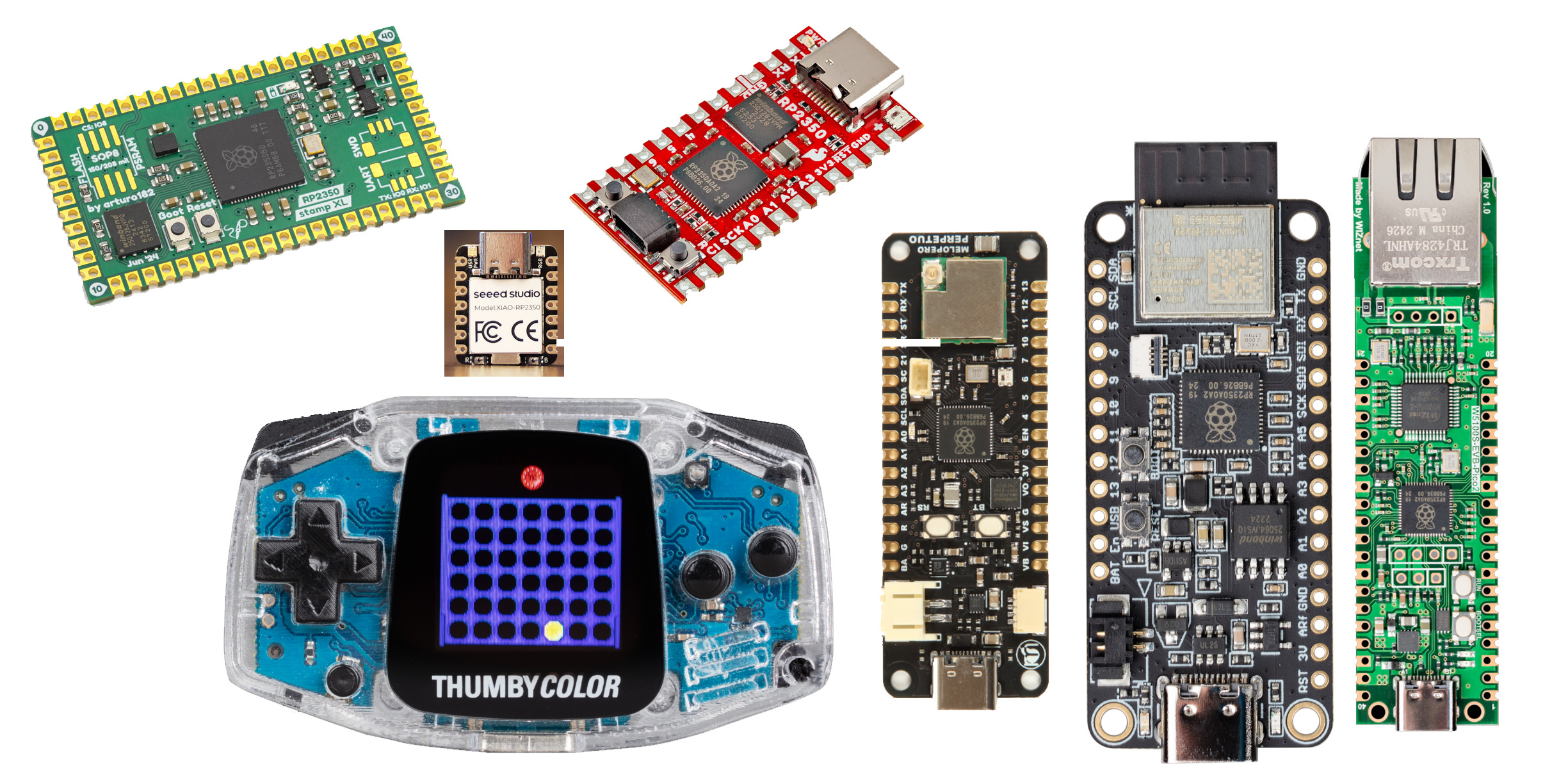
Various companies like Seed Studio, SparkFun, Tiny Circuits, Switch Science, Solder Party, and others have showcased their variants of the RP2350-powered dev boards which will be launching soon.
Raspberry Pi Pico 2 costs $5 and will be available until at least 2040. The RP2350 microcontroller price ranges from $0.80 to $1.30 depending on the variant and quantity.





